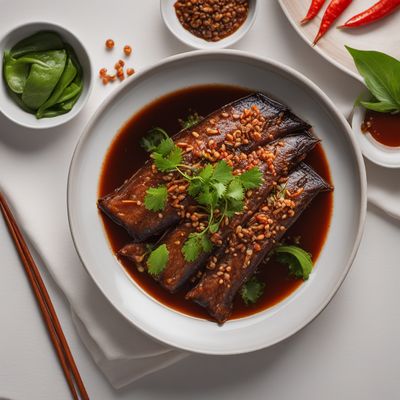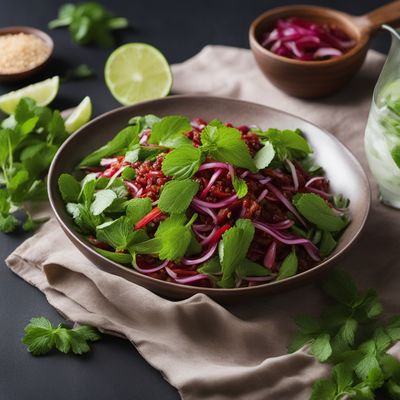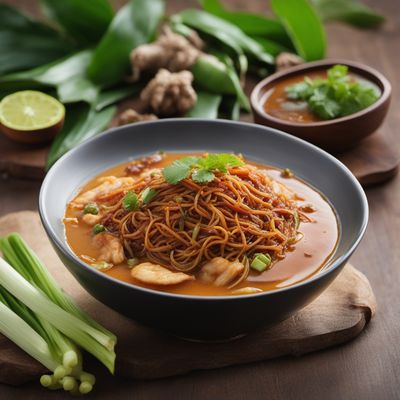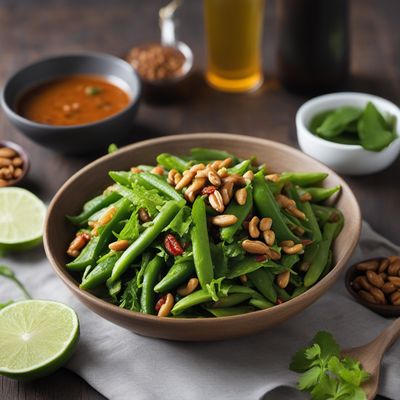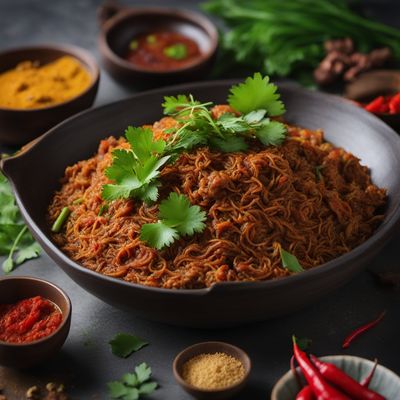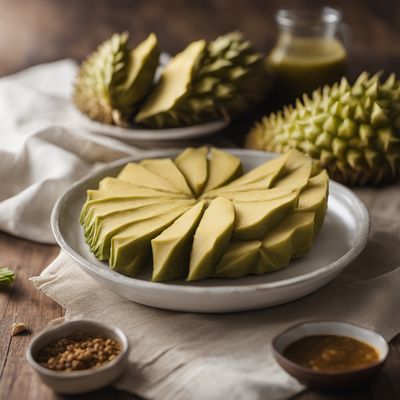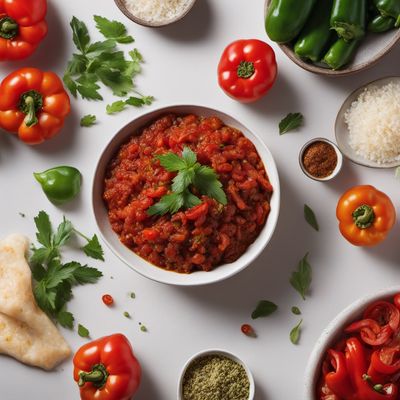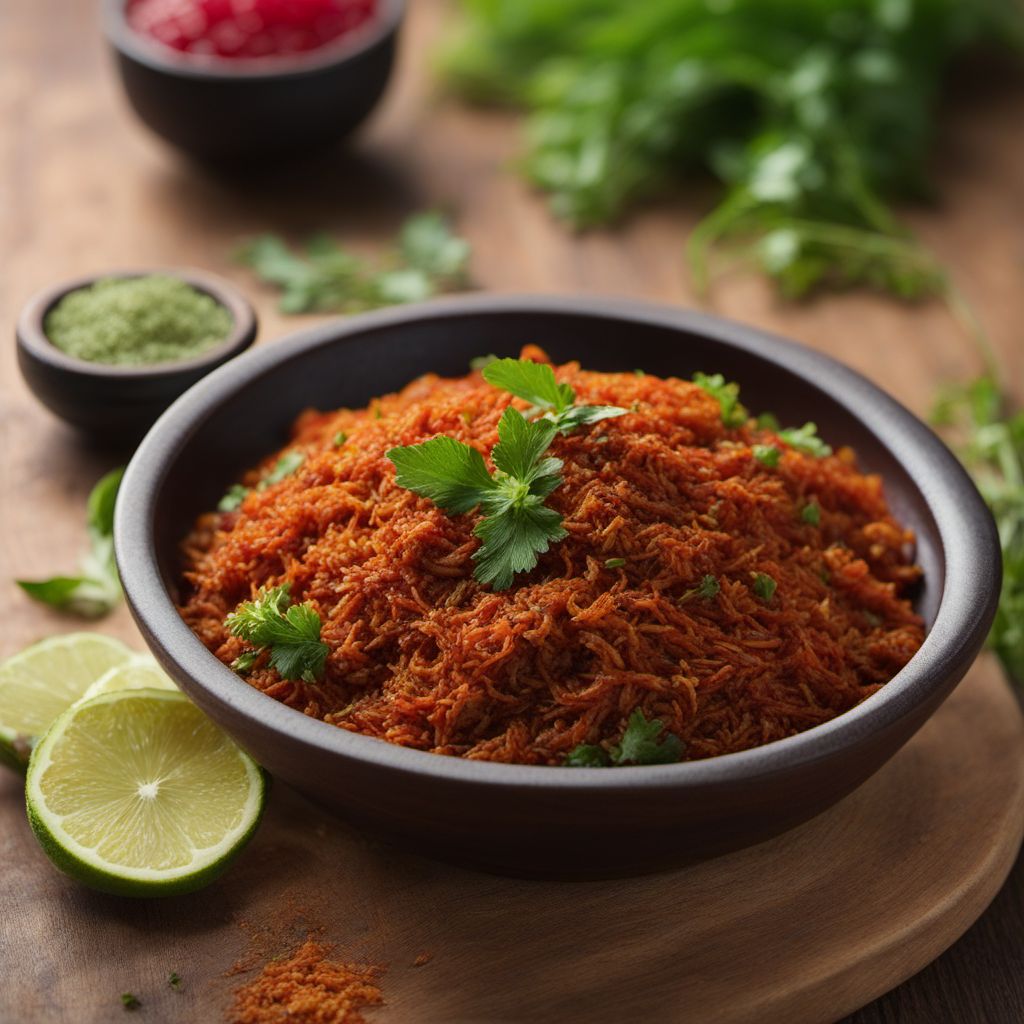
Recipe
Hazaragi Budu
Savory Hazaragi Fish Sauce: A Flavorful Delight
4.1 out of 5
Hazaragi Budu is a traditional fish sauce from Hazaragi cuisine. This pungent and savory condiment adds depth and umami to a variety of dishes. Made with fermented fish, it is a staple in Hazaragi cooking, enhancing the flavors of soups, stews, and grilled meats.
Metadata
Preparation time
20 minutes
Cooking time
N/A
Total time
2 weeks (including fermentation)
Yields
4 servings
Preparation difficulty
Medium
Suitable for
Pescatarian, Gluten-free, Dairy-free, Low-carb, Paleo
Allergens
Fish
Not suitable for
Vegan, Vegetarian, Nut-free, Shellfish-free, Soy-free
Ingredients
In Hazaragi cuisine, the Budu sauce is adapted to incorporate local ingredients and flavors. While the Malaysian Budu sauce is typically made with anchovies, the Hazaragi version may use locally available fish varieties. Additionally, the spices and seasonings used in Hazaragi Budu may differ, reflecting the unique flavor profile of Hazaragi cuisine. We alse have the original recipe for Budu, so you can check it out.
-
500g (1.1 lb) small fish (anchovies, sardines, or local fish variety) 500g (1.1 lb) small fish (anchovies, sardines, or local fish variety)
-
100g (3.5 oz) salt 100g (3.5 oz) salt
-
2 tablespoons ground black pepper 2 tablespoons ground black pepper
-
2 tablespoons ground cumin 2 tablespoons ground cumin
-
2 tablespoons ground coriander 2 tablespoons ground coriander
-
2 tablespoons ground turmeric 2 tablespoons ground turmeric
-
4 cloves garlic, minced 4 cloves garlic, minced
-
1 thumb-sized piece of ginger, grated 1 thumb-sized piece of ginger, grated
-
2 tablespoons vinegar 2 tablespoons vinegar
Nutrition
- Calories (kcal / KJ): 50 kcal / 209 KJ
- Fat (total, saturated): 1g, 0g
- Carbohydrates (total, sugars): 0g, 0g
- Protein: 10g
- Fiber: 0g
- Salt: 10g
Preparation
-
1.Clean the fish thoroughly, removing the heads and guts.
-
2.Rinse the fish under cold water and pat dry with a paper towel.
-
3.In a large bowl, combine the fish, salt, black pepper, cumin, coriander, turmeric, garlic, and ginger. Mix well to ensure the fish is evenly coated with the spices.
-
4.Transfer the mixture to a clean glass jar or airtight container.
-
5.Cover the jar with a clean cloth or plastic wrap, securing it tightly.
-
6.Place the jar in a cool, dark place and let it ferment for at least 2 weeks, stirring occasionally.
-
7.After the fermentation period, strain the liquid from the solids using a fine-mesh sieve or cheesecloth.
-
8.Stir in the vinegar to enhance the flavor and preserve the sauce.
-
9.Transfer the Budu sauce to sterilized bottles or jars and store in the refrigerator.
Treat your ingredients with care...
- Fish — Ensure the fish is fresh and of good quality to achieve the best flavor in the Budu sauce.
Tips & Tricks
- Adjust the amount of salt and spices according to your taste preferences.
- Use a glass jar or airtight container for fermentation to prevent any unwanted flavors.
- Stir the mixture occasionally during fermentation to ensure even distribution of flavors.
- Store the Budu sauce in the refrigerator to prolong its shelf life.
Serving advice
Serve Hazaragi Budu as a dipping sauce alongside grilled meats, such as kebabs or roasted chicken. It can also be used as a seasoning in soups, stews, and rice dishes to add a unique depth of flavor.
Presentation advice
Transfer the Budu sauce to a small serving bowl or dish and garnish with fresh herbs, such as cilantro or mint, for an appealing presentation.
More recipes...
For Malaysian cuisine » Browse all
For Hazaragi cuisine » Browse all
More Malaysian cuisine dishes » Browse all
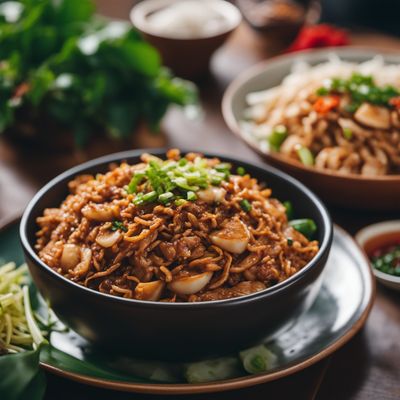
Char kway teow
Stir-fried Rice Noodles
Char kway teow is a popular Malaysian dish consisting of stir-fried flat rice noodles, shrimp, Chinese sausage, bean sprouts, and eggs. It is...

Lemang
Bamboo-cooked glutinous rice
Lemang is a traditional Malaysian dish made from glutinous rice and coconut milk, cooked in bamboo tubes over an open fire. It is often served...
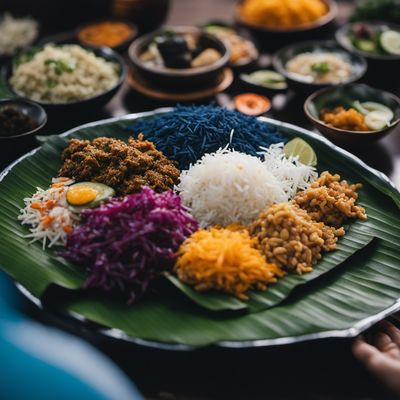
Nasi kerabu
Nasi kerabu is a traditional Malaysian dish that is made with blue rice, fish, and vegetables.
